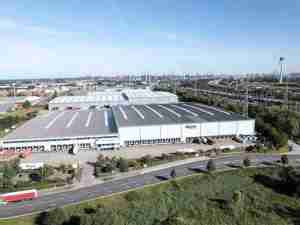Statement by John McLaurin, Pacific Merchant Shipping Association
Queen Mary’s massive rehabilitation costs and years of work renders the City’s plan untenable for the Port of Long Beach.
The City of Long Beach will hold a study session this afternoon on their plan to foist the financial liability of the Queen Mary onto the Port of Long Beach (POLB).
The study session is to consider the transfer of the Queen Mary to the POLB, but the real question is whether the City of Long Beach will discuss the diversion of Port resources from infrastructure improvements, zero emission energy upgrades, and environmental improvement programs to the rehabilitation of the Queen Mary. Organizations involved in port programs should pay close attention to the hundreds of millions of dollars in port funds that will be used to rehabilitate the Queen Mary, operate a financially unsuccessful tourist “attraction,” and the deterioration of the rusted Russian submarine next to the dilapidated Queen Mary.
The first order of business for the study session should be an honest assessment of the rehabilitation costs. According to a January 2017 Marine Survey conducted by the engineering firm of Simpson, Gumpertz & Heger, a minimum of $289 million worth of repairs were identified. Attorneys for the City described the survey as “comprehensive” noting “critical life safety issues” that “may cause injury or fatalities to guests, visitors, or employees.” Moreover, the $289 million estimate will most likely increase as more repair and safety issues are found.
The study session should also confirm that the rehabilitation timeline is extensive. For the Queen Mary to once again be considered a safe and attractive tourist destination, it must be structurally sound and environmentally safe. The timeline to assess repairs, draft plans, and complete the repairs would take many years.
Finally, the session should cover the financial burden that will sap resources meant for environmental infrastructure investments and community programs. Instead of money generated from imported and exported goods going to infrastructure upgrades to keep the port competitive and meet environmental goals, the funds paid to the port by tenants and cargo
owners will be diverted to pay for the restoration of the ill-fated Queen Mary and the operation of a tourist attraction that has lost money for decades.
The Port of Long Beach’s Clean Air Action Plan (CAAP) requires a transformative transition to zero emissions by 2030. To achieve that goal, the Port must invest in energy and equipment upgrades and participate in research and development programs for replacement technologies that currently do not exist. Spending hundreds of millions of Port dollars on a failed tourist attraction needs to be justified financially and reconciled with the Port’s environmental mandates.
The City and Port of Long Beach should use this Study Session to review the long-term goals for the Port and the priorities of the surrounding community. The officials presiding should refrain from making the session a promotional event for the transfer of responsibility. There are real financial, infrastructure and operational issues that require a fair and objective review.









